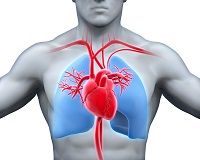Article
Heart Failure, Diabetes, and Medication: An Interesting Triad
Author(s):
A study published in Metabolic Syndrome and Related Disorders indicates that sodium glucose cotransporter-2 inhibitors (SGLT2 inhibitors, which affect both supply and demand pathways in the heart) may be the preferred treatment for diabetics with heart failure.

Diabetics are more than twice as likely to develop heart failure (HF) compared to non-diabetics. In fact, 30% of diabetics will develop HF and 40% of HF patients have diabetes. Hyperglycemia and hyperlipidemia—hallmark components of diabetes—“flood” the heart with energy (fats and sugar), predisposing patients to HF. Research has shown that this situation is aggravated by insulin sensitizers (eg, metformin and thiazolidinediones).
Now, an article published in Metabolic Syndrome and Related Disorders indicates that sodium glucose cotransporter-2 inhibitors (SGLT2 inhibitors, which affect both supply and demand pathways in the heart) may be preferred in HF.
Excessive fatty acid and glucose uptake leads to accumulation of fatty acids and toxic glycolic metabolites in the heart. This induces contractile dysfunction, myocardial hypertrophy, impaired left ventricular filling, diastolic dysfunction, and bi-atrial enlargement.
The heart’s peroxisome proliferator-activated receptors (PPAR-α) induce fatty acid uptake from the blood; although this is helpful to lower serum lipid levels, this benefit is at the expense of the heart. The thiazolidinediones, which activate PPAR, act through two mechanisms to worsen HF.
SGLT2 inhibitors increase glucose removal from the body (rather than cellular uptake from the serum) thereby decreasing the amount of glucose available for myocardial uptake. Additionally, SGLT2 inhibitors cause a 3 to 5 mm Hg drop in systolic and 2 mm Hg drop in diastolic blood pressure for more than 12 weeks through mild diuresis.
The authors assert SGLT2 inhibitors are safe in patients with HF and intact renal function. SGLT2 inhibitors reduce glucolipotoxicity and maintain heart function by reducing blood glucose without increasing the supply to the myocardium. Long-term survival benefits are unknown due to their recent advent in use but large scale trials are in progress.’’




